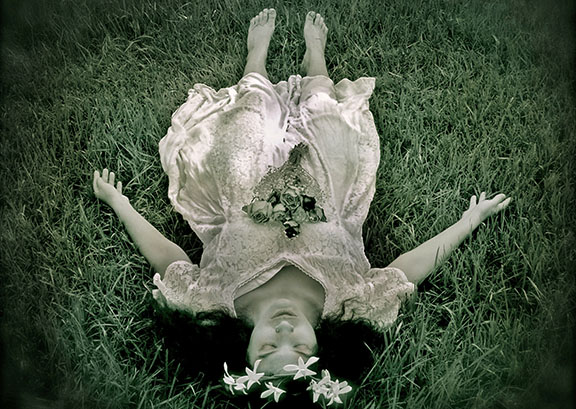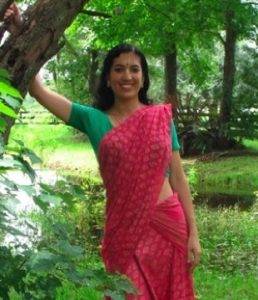 At the heart of life’s most seductive, unsolved mysteries we find death—that dizzying prospect that our existence is but a flicker upon the landscape of eternity. Or is it? Humans have resisted accepting their own mortality since antiquity, when attitudes toward dying were engaged in relationships with death deities. From the Greek’s Hades to the Hindu and Buddhist’s Yama, to the Egyptian’s Osiris, death was not portrayed as something finite, but as a transition or passage that led to infinite life. Thus, traditionally, the relationship our species has with death is tightly wound around the way we approach living.
At the heart of life’s most seductive, unsolved mysteries we find death—that dizzying prospect that our existence is but a flicker upon the landscape of eternity. Or is it? Humans have resisted accepting their own mortality since antiquity, when attitudes toward dying were engaged in relationships with death deities. From the Greek’s Hades to the Hindu and Buddhist’s Yama, to the Egyptian’s Osiris, death was not portrayed as something finite, but as a transition or passage that led to infinite life. Thus, traditionally, the relationship our species has with death is tightly wound around the way we approach living.
The world’s religious and cultural perspectives on death and dying have been some of the most powerful lifestyle architects throughout history. They have designed rituals, birthed myths, influenced behavior and served as social maps, satisfying the part of the collective, human psyche that identifies itself with transcending mortality. Yet the dance with death’s inevitability entails of uncomfortable turns and twists that oscillate between confidence and fear. When fearful attitudes toward death predominate, traditions around the globe concur that the quality of life decreases proportionately. Because rich lives were regarded as the result of having cultivated a peaceful relationship with death, befriending death became a prominent theme in most of the world’s major civilizations.
The one singular concept that weaves together the various, multi-cultural views of the afterlife is the concept of the immortal soul, or the eternal life force, which continues to exist after the demise of the physical body. Whether referred to as the Atman by Vedantists or the ka by the Egyptians, identifying this imperishable portion of existence was the key to approaching death as a potentially rewarding journey, instead of an end in and of itself. The preparatory steps for the unavoidable undertaking of such a journey are carefully outlined in ancient texts. These depict death as an opportunity to rise, like a lotus flower out of the murky waters of this world, to a higher level of existence, leaving behind a lifeless corpse.
Corpses are poignant reminders of the inherit fragility of human life. They force us to face our own utter vulnerability and lack of control. Although most people try to avoid entering such a helpless state, the Yoga tradition encourages it as an essential part of a spiritual practice. One of the ways this powerful meditation on death and transcendence appears is as savasana, or the corpse pose. Traditionally, it is the only pose always included in an asana sequence as it injects the practitioner with the potent sobriety critical for sculpting consciousness.
Although approximately over 200,000 people die each day around the world, very few deliberately prepare for it. In the longest epic poem of the world, the Mahabharata, King Yudhishthira is asked: “Of all the things in life, what is the most amazing?” To this, he replies, “That a man, while seeing others die around him, behaves as if he will never die.” A denial of death, or fear of it, was interpreted as an undesirable state of being described in ancient Vedic literature as a tight flower bud refusing to blossom. Even modern investigators of consciousness, like Carl Jung, echoed this by viewing humanity’s general resistance to death as “something unhealthy and abnormal, which robs…life of its purpose.” Thus, reconnecting with purposeful living meant relinquishing one’s identification with temporary aspects of existence, such as one’s body. A peaceful death equaled the birth of illumined consciousness.
Savasana honors the dying process as an integral part of spiritual living. This practice is one of anticipatory dying, which contributes significantly to the quality of one’s life. Significantly, traditional Yoga asana routines will often begin and end with the corpse asana. This carefully designed structure is intended to bring awareness to the cyclical nature of being, as it carries the participant through a symbolic cycle of death, birth, action and death during a single Yoga session. The movements mirror the morphing forms consciousness entertains while circling around in this cyclical wheel known as samsara.
Though savasana may appear like one of the easiest poses to master, its challenge lies in the posturing of one’s consciousness in relation to one’s own death. Lying on one’s back, with arms and legs falling gently to the side, slow and soothing abdominal breathing relaxing every muscle, the yogi in savasana prepares for a deep meditation on divine substance—that immortal and eternal component of existence that outlives the body. Every inhalation invites awareness of its presence, and every exhalation lets go of the obstacles that prevent one from identifying with it. Developing sensitivity to the movement of air within the body is preparatory for the breath’s final expulsion of consciousness from the body.
One can observe resonances of savasana in the Tibetan Buddhist’s view of death. The Bardo Thotrol, or Tibetan Book of The Dead, describes what a graceful navigation through the experience of death looks like. It is an experience in which one’s concentration is fully focused on a single point. In Tantric Buddhism this total absorption at death is called tuk-dam, or the retreat into the petals of the heart. Within that moment of enlightened awareness, one is simultaneously lost and found. Such pure awareness exists as an extension of one’s life-long practice. Life then becomes a practice of shaping one’s consciousness for a graceful exit. The Tibetan Buddhists call this phowa, or the art of leaving the body. This same art of leaving the body is accomplished through practicing savasana.
From Sufi poetry to the diaries of Catholic mystics, intriguing parallels have been drawn between the art of dying and the art of loving—both necessitate a voluntary vulnerability and self-surrender. Both fearless loving and fearless dying are characterized by an intense absorption in something beyond oneself. This surrender of focus then becomes the gateway through which souls move into eternity. In the bhakti tradition, releasing one’s grip on the body in savasana is synonymous with the self-surrendering of love, as love is believed to share in the same immortal nature as consciousness. “Immortal is the intrinsic nature of bhakti (love) . . . Which upon attaining, a person becomes fulfilled; one becomes immortal; one becomes pleased,” says the Bhakti Sutra (as translated by Graham M. Schweig). As in Islam, death then becomes a celebration, for it delivers one into eternal pleasure.
The Bhagavat Purana describes the most irresistible pleasures, as those into which the soul is lovingly called by the sound of Krishna’s flute. At the heart of this sacred text we are given a colorful portrait of what dying perfectly looks like. A group of female yoginis called the Gopis experience death as they abruptly exit their homes to follow the melodious sound of Krishna’s flute. Anxious to answer the sacred love call, the Gopis abandon everything to respond to it, running to meet with Krishna in the forest of Vraja. To Bhakti Yogis, the loving sentiments that drive the Gopis to meet Krishna are the very same ones that carry souls into immortal realms at the time of death. Thus, those who attain immortality have done so through loving selflessly. They leave behind the corpse of everything that would prevent them from doing so. They taste the aim of savasana, as death and life wrap around eternal love.
By Catherine L. Schweig

Catherine L. Schweig, RYT, was introduced to Yoga when she was only two years old. In her mid-teens, she formerly took up the practice of meditational and devotional Yoga with teachers in India as well as the West. Catherine, also known as Krishna Kanta Dasi, traveled to India several times, visiting holy places, meeting teachers and deepening her passion for the study of Bhakti Yoga and Eastern philosophy. Together with Graham M. Schweig, PhD, she develops workshops on “The Secret Yoga.” For more information please visit: www.secretyoga.com.
From Integral Yoga Magazine, Fall 2011

